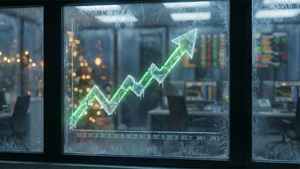
A hypothetical imposition of a dramatic 50% tariff on copper imports into a major economy could trigger an unexpected and far-reaching domino effect across global commodity markets. While ostensibly aimed at bolstering domestic copper production and protecting local industries, such a steep tariff would not only reshape the copper market but also inadvertently squeeze the supply of silver, a critical industrial and precious metal largely produced as a byproduct of copper mining. This unintended consequence has the potential to drive silver prices significantly higher, presenting both challenges for industries reliant on the metal and opportunities for savvy investors.
The proposed tariff would mark a profound shift in trade policy, creating immediate market volatility and setting off a chain reaction that could see major price differentials emerge between domestic and international copper prices. Beyond the direct impact on copper-intensive sectors like construction, electronics, and automotive manufacturing, the ensuing reduction in global copper mining activity would inevitably lead to a substantial decrease in the available silver supply, given that over 70% of silver is extracted as a byproduct from other metal mines, with copper operations being a primary source. This intricate relationship underscores how protectionist trade measures on one commodity can have profound and often overlooked implications for others, reshaping supply chains and investment landscapes globally.
A Seismic Shift in Trade Policy and Its Precious Metal Aftershocks
The hypothetical scenario of a 50% tariff on copper imports would represent an unprecedented move in modern trade policy, designed to drastically alter the economics of copper sourcing for domestic industries. Such a tariff would effectively double the cost of imported copper, making it prohibitively expensive for manufacturers and forcing a rapid recalibration of supply chains. The rationale behind such a drastic measure would likely stem from a desire to bolster national security through resource independence, protect domestic mining jobs, or as a retaliatory measure in a broader trade dispute. However, the immediate consequence would be a massive price differential, with copper futures on domestic exchanges soaring while international benchmarks on the London Metal Exchange (LME) or Shanghai Futures Exchange (SHFE) might decline due to a glut of supply redirected from the tariff-imposing nation. This divergence would create significant arbitrage opportunities and immense pressure on global trade flows.
The direct link between copper mining and silver production is a critical factor often overlooked in discussions of tariffs on base metals. Approximately 20-25% of global silver mine production, amounting to over 200 million ounces annually, originates as a byproduct from copper mining operations. Silver (XAGUSD) is frequently found in ore bodies alongside copper (HG=F), lead, and zinc, meaning that the economic viability of extracting silver is often tied to the profitability of mining these primary metals. When copper mining activity decreases—whether due to reduced demand from a major importing nation, increased operational costs for miners, or a global oversupply—the amount of byproduct silver available on the market also shrinks.
This intricate dependency means that a significant tariff on copper would not only impact copper-consuming industries but also send tremors through the silver market. As the cost of imported copper rises, industries that previously relied on foreign supply would face higher input costs. This could lead to a contraction in demand for copper-intensive products, subsequently reducing the incentive for global copper miners to maintain or increase production. Furthermore, if domestic copper production within the tariff-imposing nation cannot fully compensate for the reduced imports, overall global copper output could slow. This slowdown in copper mining would directly translate to a diminished supply of byproduct silver, creating scarcity in a market already experiencing growing industrial demand from sectors such as photovoltaics, electric vehicles, and 5G technology. The reduction in supply, coupled with steady or increasing demand, would inevitably exert significant upward pressure on silver prices, highlighting the interconnectedness and delicate balance of global commodity markets.
The Economic Chessboard: Who Gains and Who Bears the Brunt
A 50% tariff on copper imports would redraw the lines of profitability across global industries, creating clear winners among domestic producers and severe challenges for international exporters and copper-reliant manufacturers. The economic reverberations would be felt keenly by companies at every stage of the supply chain, from the mine to the end-product consumer.
Domestic copper mining companies, particularly those with substantial U.S. operations, would stand to be significant beneficiaries. With imported copper suddenly 50% more expensive, demand would shift dramatically towards domestically sourced metal, allowing local producers to command higher prices and expand their profit margins. Freeport-McMoRan Inc. (NYSE: FCX), as America's largest copper producer with major mines in Arizona, would be a prime example of a company positioned to capitalize on this scenario, seeing a direct boost to its U.S. revenue and profitability. Similarly, companies like Southern Copper Corporation (NYSE: SCCO), headquartered in Arizona, and Hudbay Minerals Inc. (NYSE: HBM), with U.S. assets, would likely see an improved financial outlook for their domestic operations. Conversely, international copper giants that traditionally supply the U.S. market, such as BHP Group (NYSE: BHP), Rio Tinto Group (NYSE: RIO), and First Quantum Minerals Ltd. (TSX: FM.TO), would face a significant hurdle. Their copper exports to the U.S. would become uncompetitive, forcing them to redirect supply to other markets, potentially at lower prices, or face reduced demand, leading to decreased revenue and possible production cuts.
The most substantial burden of the copper tariff would fall squarely on copper-consuming manufacturers. Copper is an indispensable component in countless products, from electrical wiring and automotive parts to electronics and construction materials. Companies in these sectors would grapple with a sudden and massive surge in their raw material costs. For instance, in the burgeoning electric vehicle (EV) sector, where vehicles utilize significantly more copper than traditional internal combustion engines, manufacturers like Tesla Inc. (NASDAQ: TSLA), Ford Motor Co. (NYSE: F), and General Motors Co. (NYSE: GM) would see production costs escalate, potentially impacting EV adoption rates or consumer prices. Similarly, electrical equipment manufacturers such as General Electric (NYSE: GE) and those in the broader construction and infrastructure industries, along with electronics giants like Intel Corporation (NASDAQ: INTC) and defense contractors such as Lockheed Martin Corporation (NYSE: LMT), would experience compressed profit margins and potentially reduced competitiveness in global markets. The increased costs could also trigger demand destruction as finished products become more expensive, further exacerbating challenges for these industries.
However, the unintended consequences of the copper tariff create a silver lining for primary silver producers. As copper mining operations globally potentially scale back due to altered market dynamics or a redirection of supply, the amount of byproduct silver entering the market would inherently decrease. This reduction in silver supply, coupled with steady or increasing industrial demand for silver in high-growth sectors like photovoltaics and 5G technology, would likely drive silver prices upward. Pure-play silver miners such as Pan American Silver Corp. (NYSE: PAAS), First Majestic Silver Corp. (NYSE: AG), MAG Silver Corp. (NYSEAMERICAN: MAG), and Endeavour Silver Corp. (NYSE: EXK) would be poised to benefit significantly from these elevated prices, seeing their revenues and profit margins swell. Even diversified miners with substantial silver output, like Hecla Mining Company (NYSE: HL), would experience a positive impact, enhancing the profitability of their silver-rich operations. This dynamic underscores how a trade policy aimed at one commodity can inadvertently create a boon for another, particularly when their production is intrinsically linked.
Global Currents: Tariffs, Green Energy, and the Looming Specter of Resource Nationalism
The imposition of a 50% tariff on copper imports would reverberate far beyond the immediate metal markets, serving as a powerful illustration of evolving global trade dynamics and resource politics. This aggressive protectionist measure aligns directly with the rising tide of resource nationalism, where nations increasingly seek to secure domestic control over critical raw materials for economic advantage and strategic independence. Such policies often manifest under the guise of national security, aiming to reduce reliance on foreign supply chains, as was the case for the theoretical justification of this copper tariff. However, this shift inevitably creates market distortions, compels supply chain restructuring, and often comes at the cost of global economic efficiency, prioritizing national strategic autonomy.
The timing of such a tariff is particularly significant given the surging global demand for critical minerals, driven by the ambitious transition to green energy. Both copper and silver are indispensable to this transformation. Copper is the lifeblood of electrification, essential for electric vehicles, renewable energy infrastructure like solar panels and wind turbines, and smart grids. Silver, meanwhile, is a crucial component in photovoltaic cells, accounting for a substantial and growing portion of its industrial consumption, in addition to its use in 5G technology. A substantial copper tariff risks inflating the costs for these green technologies, potentially slowing their adoption or forcing manufacturers to seek less efficient or more expensive alternatives. The unintended reduction in byproduct silver supply, therefore, not only affects a precious metal market but also complicates the strategic objective of achieving energy independence and combating climate change, highlighting the complex interplay between trade policy, resource security, and environmental goals.
The ripple effects of a 50% copper tariff would extend across the broader metals complex. The immediate consequence would be a severe fragmentation of the global copper market, with U.S. domestic prices surging to a significant premium over international benchmarks. This creates an unlevel playing field, making U.S. manufactured goods that rely on copper less competitive on the global stage. While some manufacturers might explore substitution with metals like aluminum, such shifts are often limited by performance requirements and can introduce new supply chain challenges. For other precious metals, the impact would be more nuanced. While silver would likely see a price surge due to supply constraints, gold (XAU=X), traditionally a safe-haven asset, might also see increased investment appeal amid heightened geopolitical and economic uncertainty sparked by trade wars. This scenario underscores how protectionist policies can create significant volatility and redistribute value across interconnected commodity markets.
Historically, aggressive tariff policies have often led to broader trade wars and economic instability. The infamous Smoot-Hawley Tariff Act of 1930, which imposed duties of over 50% on thousands of imports, serves as a stark warning. It triggered widespread international retaliation, drastically contracted global trade, and is widely regarded as having exacerbated the Great Depression. More recently, the U.S.-China trade war of 2018-2019 demonstrated how tariffs on specific goods can escalate into broader economic conflicts, disrupting supply chains and inflicting costs on both sides. The potential for retaliatory tariffs from major copper-exporting nations or from countries whose manufacturers are disadvantaged by inflated copper prices is a significant regulatory and policy risk. Furthermore, such a tariff would inevitably prompt a re-evaluation of national critical mineral strategies, potentially leading to similar protectionist measures for other metals, including silver, given its designation as a critical mineral. These historical precedents suggest that while aiming for domestic advantage, such a tariff risks unintended global economic instability and a fragmentation of the rules-based international trading system.
Navigating the New Normal: Strategic Shifts and Emerging Opportunities
The imposition of a 50% tariff on copper imports would usher in a period of intense volatility and strategic re-evaluation across global markets, with both short-term shocks and long-term structural changes. In the immediate aftermath, domestic copper prices would surge dramatically, trading at a significant premium over international benchmarks. This divergence would trigger a frantic recalibration for copper-intensive industries, facing soaring input costs and potentially leading to widespread inflationary pressures. Simultaneously, the anticipation of reduced copper mining activity and its direct impact on byproduct silver supply would likely create upward price pressure on silver, drawing in speculative interest and potentially leading to a "short squeeze" as investors seek hedges against economic uncertainty and supply constraints. Global copper prices outside the tariff-imposing nation might experience a temporary dip due to redirected supply, fragmenting the market and creating complex arbitrage opportunities.
In the long term, industries reliant on copper would be compelled to undertake profound strategic pivots. Manufacturers would accelerate efforts to diversify their critical supplier networks, moving away from tariff-affected regions and exploring reshoring or nearshoring initiatives to build more resilient supply chains. This might involve certifying new domestic or allied-country suppliers and investing in localized production capabilities, though such transitions are costly and time-consuming. There would also be an increased impetus to explore alternative materials where feasible and redesign products to minimize copper dependency. Governments, in turn, would face the challenge of managing potential retaliatory tariffs and navigating complex trade negotiations, while simultaneously evaluating increased incentives for domestic mining and refining capacity to mitigate future vulnerabilities. The copper tariff would thus accelerate a broader trend of supply chain de-globalization and a renewed focus on national industrial policy.
For investors, this scenario presents both significant challenges and unique opportunities. The immediate challenge lies in navigating the increased market volatility and the potential for squeezed profit margins in copper-intensive sectors. However, the long-term outlook for silver could be exceptionally bullish. As reduced copper mining curtails byproduct silver supply, and industrial demand for silver in green technologies continues its upward trajectory, silver prices could see sustained growth. This makes primary silver producers and silver-focused exchange-traded funds (ETFs) attractive investment propositions, as silver could outperform gold in such a trade-distorted, supply-constrained environment. Furthermore, investments in domestic copper mining operations and companies offering advanced supply chain resilience solutions, such as AI-powered analytics or logistics technologies, could also emerge as strategic plays in this new, fragmented global commodity landscape.
The Lasting Echo: A Reshaped Market and a Critical Watchlist
A hypothetical 50% tariff on copper imports, while ostensibly a measure to protect domestic industries and foster self-sufficiency, would unleash a complex cascade of intended and unintended consequences across the global metals landscape. The immediate and profound impact on copper prices, driving domestic costs significantly higher, would reverberate through critical sectors from construction and electronics to electric vehicles and renewable energy, fundamentally altering supply chains and operational economics. However, the most compelling takeaway from this scenario is the potent and often overlooked interconnectedness of commodity markets, specifically how such a tariff on copper would inadvertently squeeze the supply of silver, a vital byproduct metal.
Moving forward, the copper market would be characterized by a stark duality: elevated domestic prices fueling a push for increased local production and recycling, contrasted with potentially subdued international prices as global supply is redirected. The challenge for the tariff-imposing nation would be to rapidly scale up domestic output to meet a significant supply deficit, a process that is capital-intensive and time-consuming. For silver, the outlook appears more uniformly bullish. With existing supply deficits already a concern, any reduction in byproduct silver from curtailed copper mining, combined with robust and growing industrial demand from green technologies, would inevitably lead to sustained upward pressure on silver prices. This positions silver as a critical commodity and a potential hedge in an environment marked by trade friction and resource scarcity.
The significance of such a tariff extends beyond mere economics, touching upon global trade relations, inflationary pressures, and the pace of the green energy transition. It signals a potential pivot towards resource nationalism and could trigger retaliatory tariffs, fragmenting global trade flows and fostering economic uncertainty. For investors, this reshaped market necessitates a vigilant approach. In the coming months, it will be crucial to monitor global GDP growth and manufacturing activity, as these remain primary drivers for copper demand. Simultaneously, keeping a close eye on inventory levels on major exchanges, particularly for silver, will provide insights into real-time supply-demand dynamics. Further trade policy developments, including any adjustments to the tariff or new retaliatory measures, will be critical. Finally, sustained growth in electric vehicle sales and renewable energy infrastructure investment will continue to underpin the long-term demand narrative for both copper and silver, making these sectors essential indicators for market direction. This era of heightened trade tensions demands agility, foresight, and a deep understanding of the intricate web that connects global commodities.





